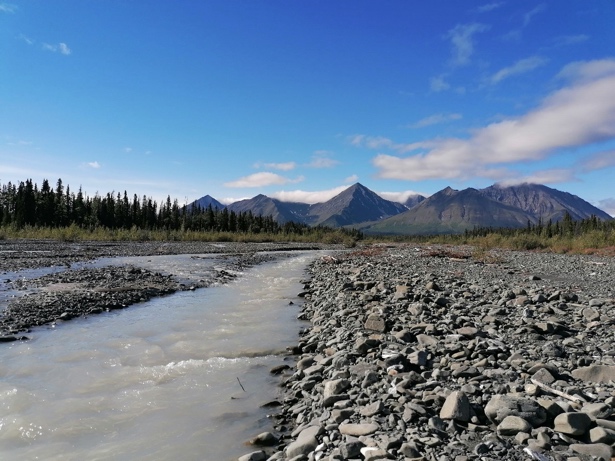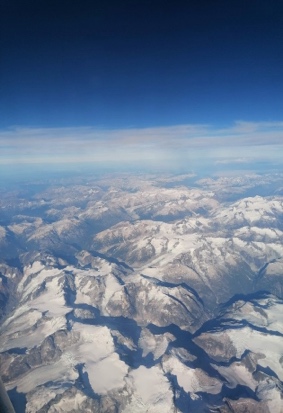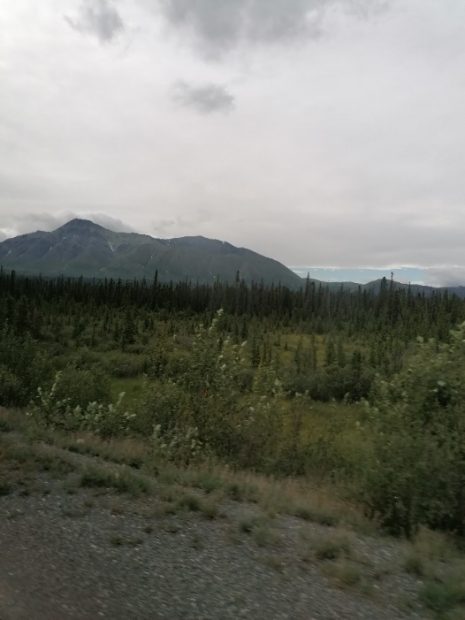
Our story
To begin with we would like to thank those at the Young Explorers Trust for supporting us in our fundraising journey for the 3.5-week BES expedition we went on to the Canadian Yukon. The skills and experiences we gained will undoubtedly stay with us for the rest of our lives, and will support us down the road, both in university and eventually in the workplace.
Our names are Tomas and Toby Richardson, and we live in Whitby, North Yorkshire. We applied to the Trust in the hopes of some financial support towards the expedition; for both of us to go on an expedition of this calibre required a great deal of fundraising and time, and such contributions as the Young Explorers Trust were invaluable in allowing us to take that first step on Yukon soil! We hope this report will give a little more information about our time in Canada and will inspire others to take similar opportunities with vigour.

Expedition Aim
The expedition sought to take young people out of their comfort zone in the remote and beautiful wilderness of the Canadian Yukon, and it certainly achieved this! We spent our time hiking, canoeing, and carrying out scientific research such as species sampling as well as water testing. When applying for the expedition we had several aims and hopes for what we might achieve, possibly the most pertinent being to grow in confidence and self-reliance, particularly in relation to carrying out actions independently. The 3.5-weeks were to be the longest we had stayed away from home, and thus we would have to adapt very quickly to organising our equipment and provisions every day and deciding what to pack each morning. Moreover, we also wanted to develop our teamworking skills, as such cooperation with our campmates would be necessary for a well-functioning expedition. Perhaps one of the biggest hopes we had for the expedition was to observe the beautiful views, flora, and fauna of the Yukon, for we were to stay in the Kluane National Park- an area which promised to deliver in all three categories.
Expedition Account
Phase 1 – Hiking
The Kluane National Park lies in the southwest of the Yukon territory in Canada, an area of beautiful visages, looming glaciers, and vast swathes of Boreal forestry. When submerged in such mighty landscapes it was almost impossible to find adequate words – particularly when reminded that the land on which we were walking was only 20% of the Yukon territory, the other 80% being rolling mountains inaccessible to anyone without a plane. The first trail we embarked on was a 3-day route referred to as the “Gopher Mountain”- so called after the furry critters which could be seen poking out of their burrows every now and then, observing the alien silhouettes of our group with a somewhat alarmed chorus of squeaking.

This route acted as a test-run; testing the waters so to speak for the more strenuous trails to follow. Certainly, it was a perfect opportunity for the group to get to know one another; we were both pleasantly surprised by how well the group meshed together and it was greatly confidence building to be able to gel with strangers so quickly. Moreover, the trail eased us into expedition life, particularly the washing routine which would be so essential to our hygiene over the course of the three and a half weeks. It was this which first appeared to be the most difficult aspect of the expedition, for we had to use unscented soaps and toothpaste. Deodorant, as the ranger explained to us at the start of the trail, becomes redundant in the wilderness of the Yukon, and so we resolved to become comfortable with our own ‘wonderfully natural’ odours. Despite initially getting slightly lost (a near disaster straight off the block) the group worked well together to solve the problem. It was still difficult to believe we were in the Yukon, yet looking around us the breathtaking glaciers and bear scat on the ground confirmed it time and time again.
Our second trail went by the name of the “St Elias” route; perhaps our favourite of the entire expedition. Starting off with a 3km road hike along the Alaska Highway we set off for St Elias Lake; a glistening pool of Sapphire nestled amongst the rolling mountains. Not only did it make water collection, filtration, and purification more efficient, but it also acted as a cooling opportunity to swim and wash, much appreciated by our overheating bodies. After staying at the lake for a night, the group decided to go on a bushwacking excursion up a nearby hill to get a better view of the lake; despite finding it extremely difficult to make our way through the dense shrubbery (there were more than a few cuts and bruises by the end) the team morale stayed high and the eventual views at the top were more than worth the effort. Unfortunately, the route was not entirely plain sailing as some members of the group contracted giardia (beaver fever) and as such toileting became unpredictable to say the least!
The third and final route was a trail known as the Auriol trail – originally a skiing route, it was later converted to accommodate hikers and incorporates breathtaking scenery of the Auriol glacier as well as beautiful, braided streams. This route was particularly enjoyable as it incorporated around 1,500m of height not only allowing us to gain some incredible views from above, but also acting as an intriguing example of the Krumholtz line – the height at which the vegetation shows signs of stunted growth due to the altitude. The trail was roughly 40km and although it was rather steeply uphill, it was surprisingly easy going – a testament to the way in which the expedition built up our fitness and endurance, especially with the heavy rucksacks.
Phase 2
The last week of the expedition was spent canoeing on lake Dezadeash, and this was certainly the phase which we were looking forward to the most. Despite some high wind speeds of up to 80 km/h, our first day was a great learning experience with the paddle leaders; our communication skills were certainly worked on as teamwork was essential to prevent capsizing. The wildlife, however, was the most spectacular aspect of the canoeing phase; seeing a moose in the wild is something which will stay with us for the rest of our lives. The largest moose, a member of the group whispered to us as we watched a particularly elegant one watering in the lake, could fit a Mini Cooper through its legs!
Financials
Young Explorers Trust
We would like to say a final thank you to the Young Explorers Trust and its sponsors for their contribution to our fundraising. Without them, we would almost certainly not have been able to go on the expedition; an expedition which has ultimately provided us with once in a lifetime experience and skills. We hope that this report will inspire other young people to embark on a similar journey of their own, for it truly is something which will stay with them for a long time to come.

